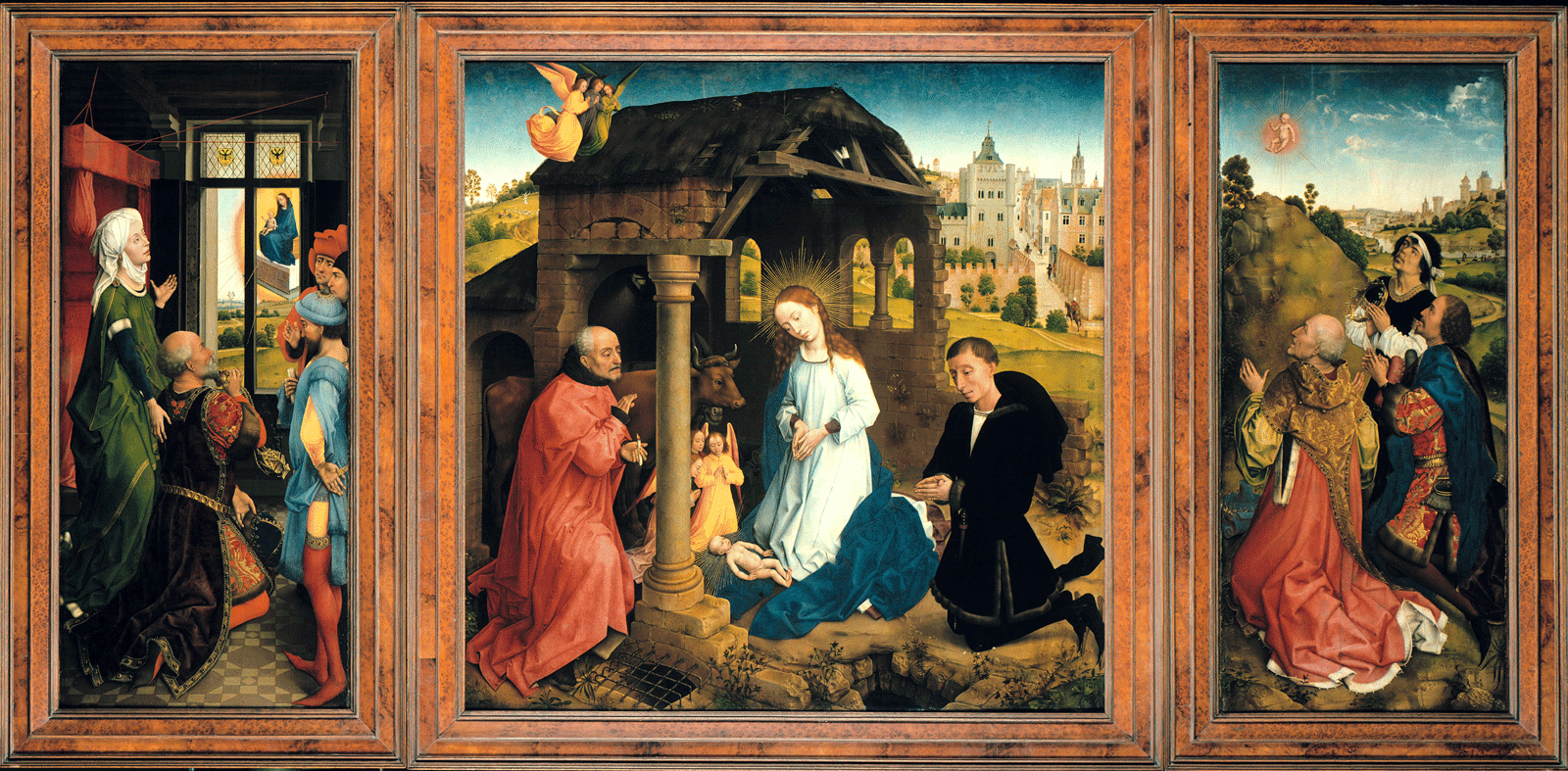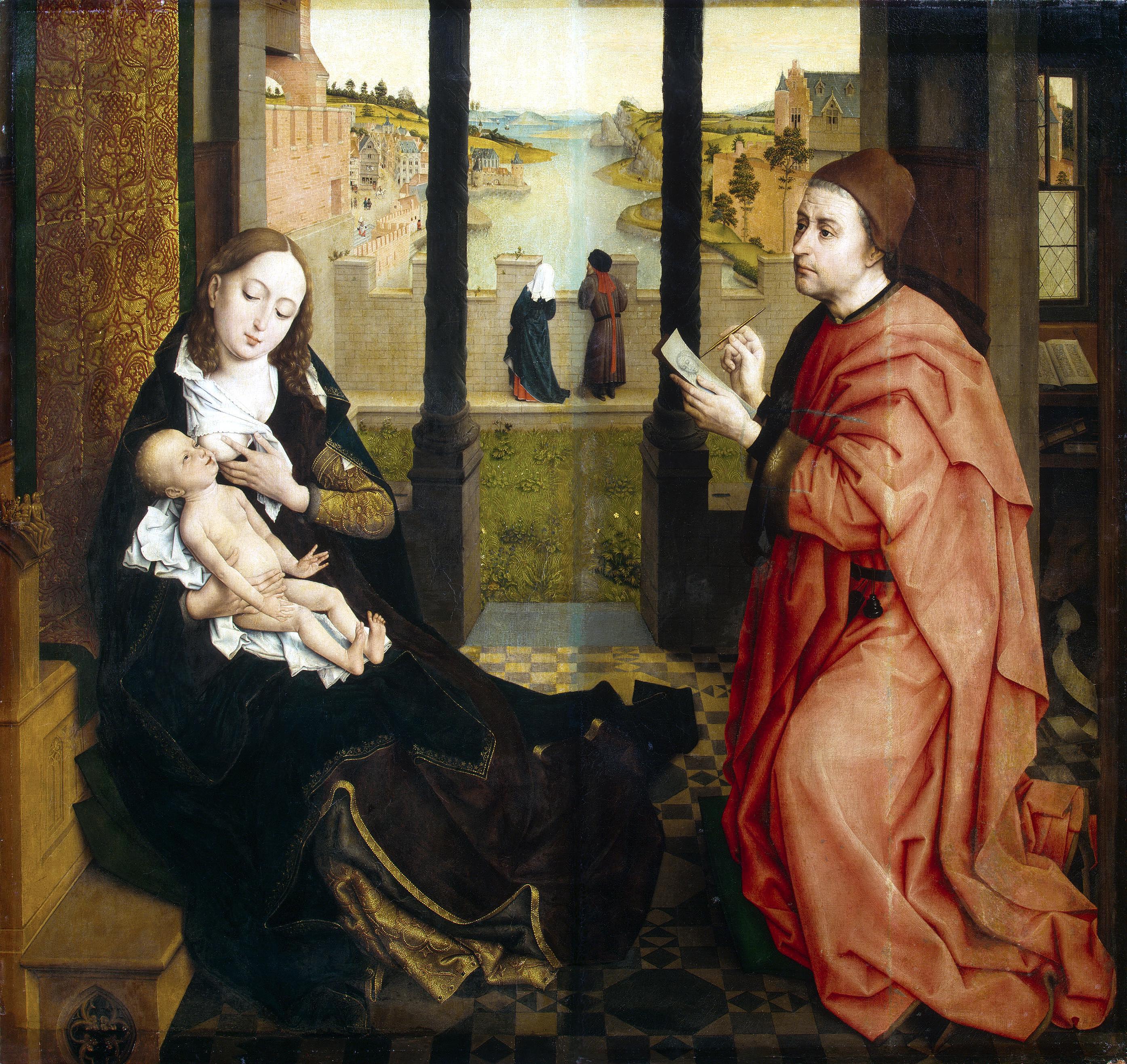Merry Christmas everyone! :) In the middle of the 17th century this triptych, known as the Middelburg Altarpiece, was in the Flemish city of Middelburg, founded by the rich Bruges burgher Pieter Bladelin and his wife around 1444. The donor of the work, also known as the Bladelin Altarpiece, is therefore usually thought to have been the founder of the city himself. On the other hand, Middelburg passed into other hands after the death of the Bladelins, who had no children, and there is no evidence that the altarpiece did not arrive there at a later date.
Furthermore, it shows only one donor, although Bladelin's wife was cofounder with him of the new city. The donor depicted, wearing the same fashions as the Duke of Burgundy and obviously a member of the upper classes, must therefore be considered unidentified. In the center panel the donor is shown kneeling in an attitude of prayer beside the Virgin and Joseph, adoring the naked Child. In the background is a town, perhaps representing Middelburg, near Bruges. The stable of Bethlehem resembles the ruin of a Romanesque chapel. The painter may have had in mind the remains of the palace of King David, who was reckoned among the forbears of Jesus. In the foreground the building is supported by a single pillar which bulks so large beside the tiny figure of the Child that it must obviously be regarded as symbolic. It can be interpreted both as a symbol of sublime power and of the place where Christ was later scourged. The message of the center panel alone would be incomplete without the scenes portrayed on the two wings. The three panels together are an allegory of the world dominion of Christ and show not only the ruler of Middelburg and Brabant but also kings in both the west and the east paying homage to the Child. Tradition has it that, on the day of Christ's birth, a prophetess, the Sibyl of Tibur, showed the Emperor Augustus a vision of the Child and his Mother in the heavens. Here the ruler of the West (the Duke of Burgundy) falls humbly on his knees, removes his crown and swings a censer as a token of sacrifice. In the right-hand wing the three kings of the Orient are depicted; deeply moved and fearful, also kneeling before the vision in the heavens; this is the star of Bethlehem, which appears in the clouds with the embodiment of the Child, to guide them on their journey. Not only in terms of the subject matter but also in the formal composition of the work, the painter has related the side-wings to the central scene. In so doing, he abandoned the uncoordinated scheme of the multipartite altarpiece familiar throughout the Middle Ages. One need only compare earlier works by Rogier van der Weyden such as the tripartite Altarpiece of Saint John the Baptist - to realize the extent of his advance. The bold use of space which the painter makes in each individual scene of the Saint John triptych becomes even more marked in the Bladelin Altarpiece, where the compass of the picture extends over all three panels, and this is also reflected in the abandonment of any dividing architectonic framework.


 Rogier van der Weyden
Rogier van der Weyden